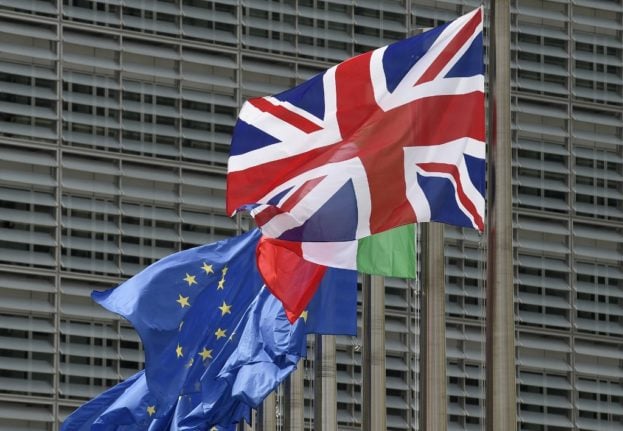Many of Italy’s British residents have reported bureaucratic problems since the UK left the European Union, mainly due to being incorrectly asked for a permesso or carta di soggiorno which they do not have.
Some of these issues have been serious – including difficulties with accessing healthcare, benefits or employment contracts.
Italian authorities announced the new, non-mandatory electronic carta di soggiorno as a means to evidence the rights of British residents in Italy post-Brexit – valid for those who had registered or applied for residency before 31st December 2020.
READ ALSO: ‘What I learned when I applied for the Brexit residence card for Brits in Italy’
But many people are facing delays in getting the cards, either because of long wait times for an initial appointment, or because of problems with fingerprinting.
Despite these issues, many of Italy’s British residents have now been able to resolve their problems thanks to assistance from the British Embassy or the IOM, say campaigners from Beyond Brexit, a volunteer-run group providing information and support on citizens’ rights.
“It was, and still is, important to highlight the problems of being wrongly asked for a permesso or carta di soggiorno, from being unable to proceed with a purchase or citizenship application to losing a job,” Beyond Brexit representatives told The Local.
“It needs to be repeated many times; UK nationals covered by the Withdrawal Agreement can’t get a permesso di soggiorno; they can get a carta di soggiorno but it’s not obligatory. It is highly recommended as, although our rights don’t depend on it, it is the best way of evidencing them.”
“Now for the good news… We know from our members that not everyone is having difficulty, even if they are still waiting for their carta di soggiorno, and others who have had problems are getting them resolved.”
Police headquarters in some parts of the country have now begun issuing the first residency cards. But for anyone who is still waiting and experiencing problems in the meantime, there is help available.
Q&A: The British Embassy answers your questions about life in Italy after Brexit

“We are sharing links to communications from the Italian authorities and directing people to the right place when they need help,” Beyond Brexit said. “Support from the British Embassy and the International Organisation for Migration (IOM) has been absolutely invaluable and we are delighted that the funding for IOM is continuing for a while longer. And, of course, people help each other by sharing their experiences.”
Here, the group shares some examples from members who have found a solution to their problems:
“I was refused healthcare; from December the local ASL refused to renew my tessera sanitaria (health card) without the permesso di soggiorno even though I had been resident and paid taxes for years. It was only after assistance in February the issue was resolved. Beyond Brexit put me in touch with the healthcare case worker at the embassy.” – Kay, Piedmont
“I applied for the ‘Premio Nascita’ via the INPS app and was refused because I did not have a permesso di soggiorno and am no longer EU. I also went directly to the local INPS office where I was told to rectify my immigration status before I could obtain any benefits. I had a lovely lady from the Consulate helping me with this (first contact via the Living in Italy website contact form). After more than three months I have finally received the ‘Premio Nascita’ and I have been informed that a circular has been sent to all INPS offices stating that us Brits who benefit from the Withdrawal Agreement do not need a ‘Permesso di Soggiorno’ and the ‘Carta di Soggiorno’ is not mandatory.” – Kayleigh, Modena
READ ALSO: Setting the record straight: What post-Brexit rights do Brits have in Italy?
“We were asked for a permesso di soggiorno to sell our house. I sent him the document sent to all notaries, which I found in Beyond Brexit, and then they agreed we don’t need the permesso.” – Carol, Veneto
“I was originally denied a carta d’identità by an office of the anagrafe di Milano as I didn’t have the carta di soggiorno. I had made the appointment but was turned away on arrival. I spoke to IOM who contacted the anagrafe. I was recontacted shortly afterwards and invited to a new appointment where it all went without a hitch.” – James, Milan
“I was refused healthcare at first but sent them something from Ministero della Salute that I got from Beyond Brexit and it was sorted. Next problem, yesterday my boss went to a CAF (Tax assistance centre) to see about getting me a contract, they told her I need a carta di soggiorno. I’ve already said I don’t and sent the links from the Ministero del Lavoro.” – Clare, Lombardia
“With my car purchase, the dealer finally agreed that I could use self declaration an hour or so after I had contacted IOM. Brilliant result. Now, if only we could get out of lockdown, I could actually drive the beast.” – George, Le Marche
if you need assistance, contact the International Organisation for Migration by emailing [email protected] or calling 800 684 884.
You can contact the British Embassy via their Living in Italy website.
Find more information and advice in the Beyond Brexit Facebook group.



 Please whitelist us to continue reading.
Please whitelist us to continue reading.
Member comments